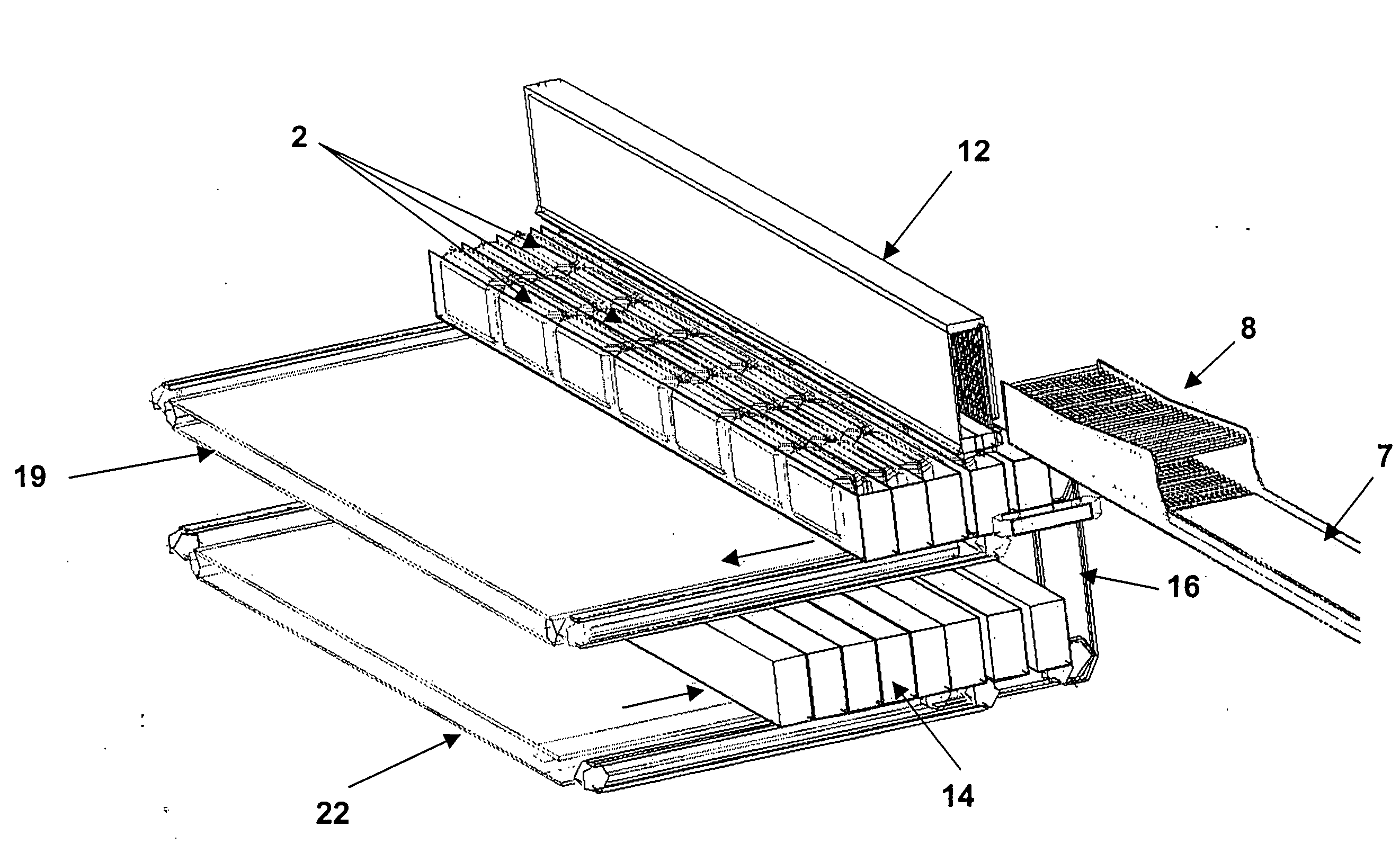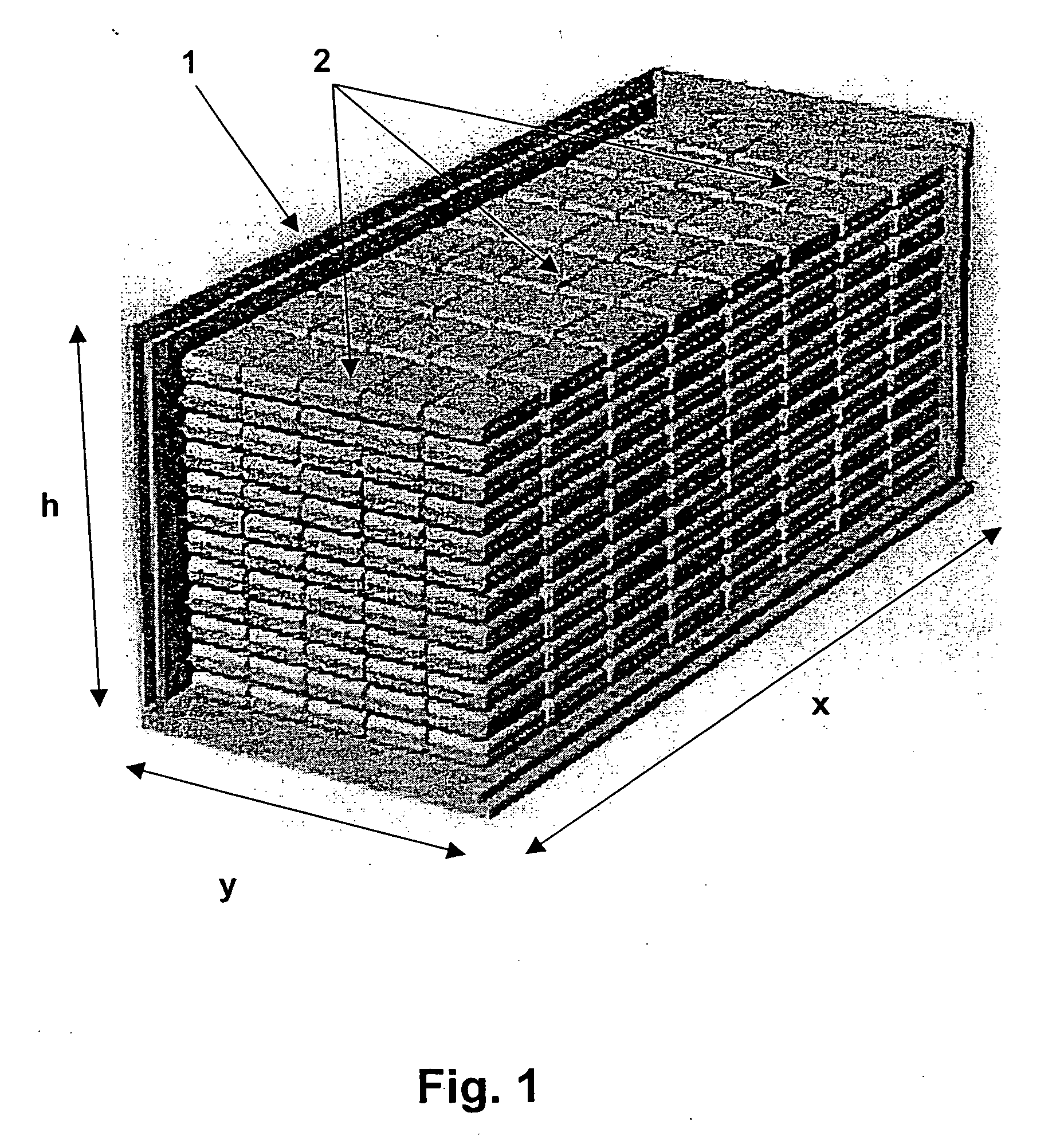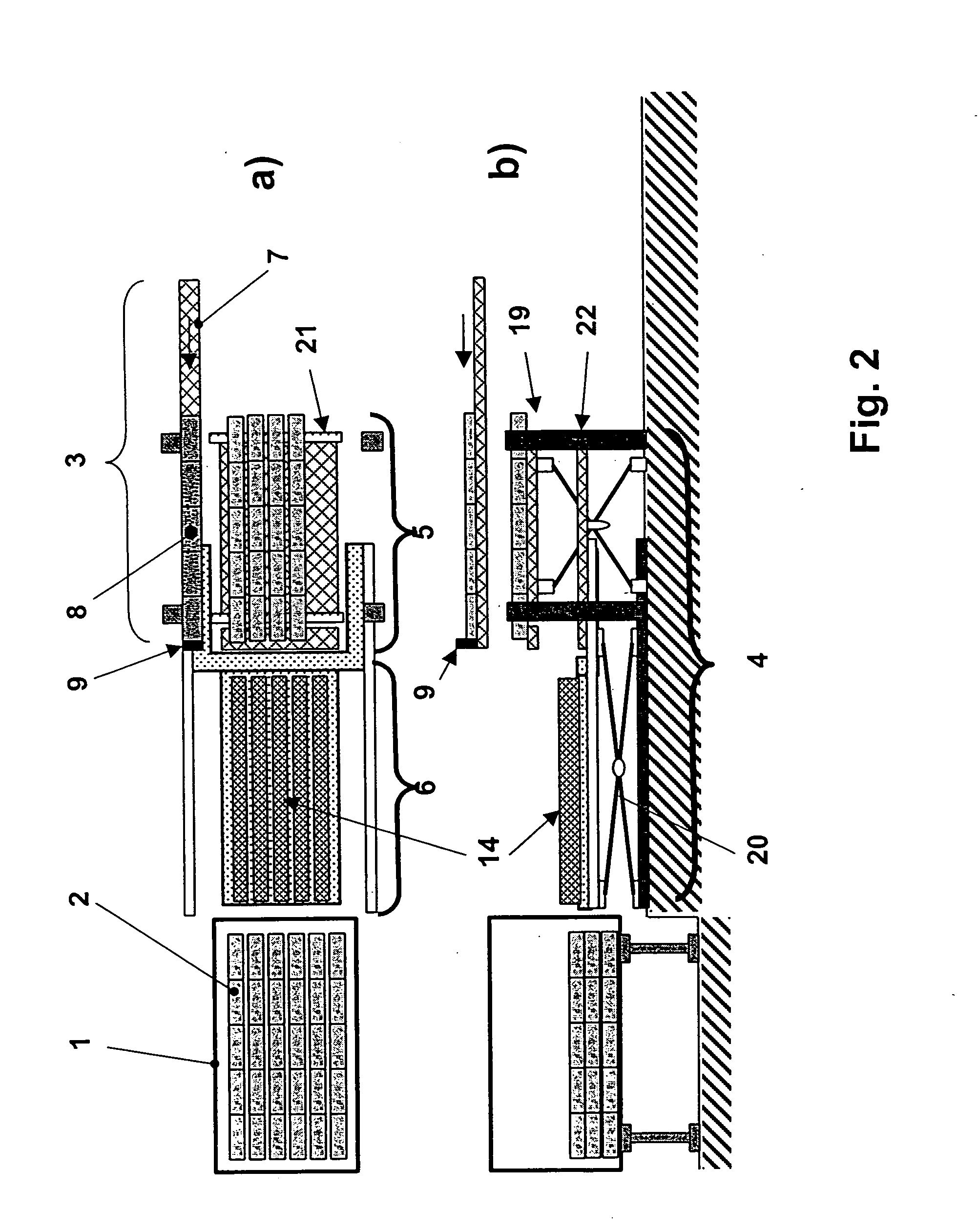System and method for loading a cargo space with piece goods
a cargo space and piece goods technology, applied in the direction of wrapping/bundling articles, packaging goods, pile separation, etc., can solve the problems of inability to fully automate the loading system with which the above described are applied, inability to load multi-side-closed containers at present, and the loss of piece goods, so as to avoid damage or loss of piece goods and reduce the loading time for the entire loading process.
- Summary
- Abstract
- Description
- Claims
- Application Information
AI Technical Summary
Benefits of technology
Problems solved by technology
Method used
Image
Examples
Embodiment Construction
[0040] Referring to the drawings in particular, the object of the installation according to the invention is to bring about an automatic, filling level-optimized, frontal or lateral loading of flexible goods, preferably sand, cereal or sugar sacks, in a multiside-closed loading space. To bring about a maximum space utilization within the loading space, prior to loading the piece goods are brought into an optimum space shape and / or orientation for loading purposes. The stack-like layer patterns producible in this way within the loading space and as can be gathered from FIG. 1, have a minimum of gaps between the stack-like piece goods. It is possible to implement with such preshaped piece goods the palletizing pattern shown in FIG. 1 with x piece goods in the loading space depth, y piece goods in the loading space width and z piece goods in the loading space height. The values x, y and z result from the loading space 1 and the piece good dimensions, whilst taking account of or corresp...
PUM
 Login to View More
Login to View More Abstract
Description
Claims
Application Information
 Login to View More
Login to View More - R&D
- Intellectual Property
- Life Sciences
- Materials
- Tech Scout
- Unparalleled Data Quality
- Higher Quality Content
- 60% Fewer Hallucinations
Browse by: Latest US Patents, China's latest patents, Technical Efficacy Thesaurus, Application Domain, Technology Topic, Popular Technical Reports.
© 2025 PatSnap. All rights reserved.Legal|Privacy policy|Modern Slavery Act Transparency Statement|Sitemap|About US| Contact US: help@patsnap.com



